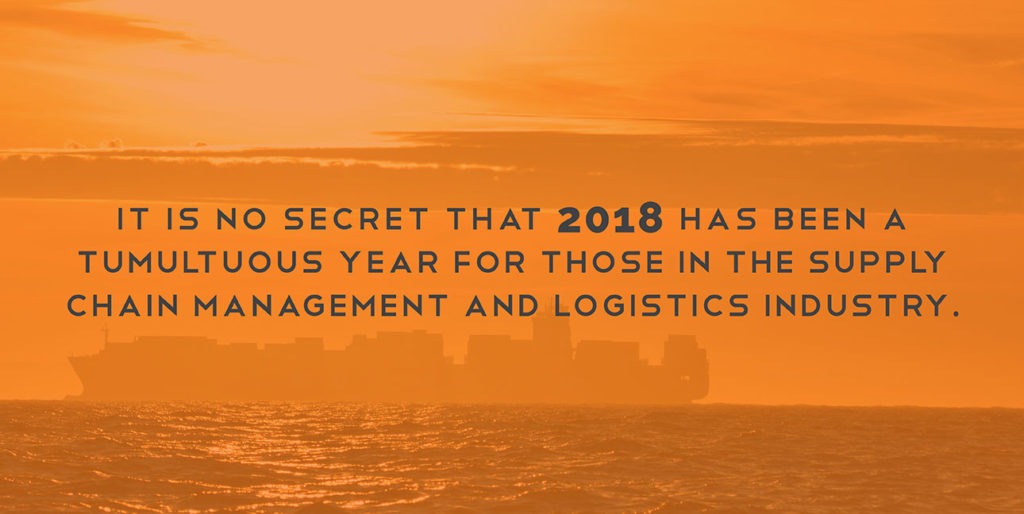It is no secret that 2018 has been a tumultuous year for those in the supply chain management and logistics industry. Between natural disasters, an escalating tariff war, and implementation of new government mandates, there has been a flurry of market price fluctuations and changes, which have ultimately impacted the bottom line for many businesses.
As we are wrapping up the year and looking towards 2019, our team spent time reflecting on the biggest stories of 2018, and how they impacted our ever-changing industry.
Here’s a look back at some of the biggest stories:
ELD Mandate and Driver Shortages
The controversial electronic logging device (ELD) mandate was one of the most talked about topics in the trucking industry at the end of 2017. The mandate, which requires carriers to install ELDs in their vehicles as a way to accurately enforce hours of service, went into effect on December 18, 2017, with full enforcement beginning on April 1, 2018.
As the newly-implemented ELD mandate took hold, the first few months of 2018 saw transportation price hikes, largely due to capacity reduction, fewer driver miles on long haul loads compared to pre-ELD, and a decrease in the number of turns an ocean container dray carrier could execute in one day. In addition to the ELD mandate, the trucking industry was also grappling with a looming driver shortage that caused alarm.
Tariff War
In March, President Trump stated that he would place a 25% tariff on steel imports, and a further 10% on aluminum imports; not long after, he also announced his plan to impose a 25% tariff on $34 billion worth of Chinese imports. These international trade war threats set off a frenzy of speculation about the fate of the international shipping industry.
Throughout the remainder of 2018, there have been constant updates in regards to new tariff deals. The proposed tariffs upended the already-chaotic international shipping industry and importers have been scrambling for ocean, truck and rail capacity in order to front-load ahead of the tariffs fully taking hold on January 1, 2019.
Natural Disasters
There are an infinite number of factors that may impact cost, timing, and overall success of supply chains, but none are as unpredictable or devastating as natural disasters. Depending on the severity, some natural disasters have the ability to cripple or gridlock entire supply chains.
Just this year, the United States battled Hurricane Florence along the East Coast in September, Hurricane Michael in the Gulf Coast in October, and most recently, the horrific wildfires in California, all of which caused major disruption and devastation.
In order to combat the unpredictability of natural disasters, it is important to have back-up plans in place for all routes and work with a diverse range of suppliers in different geographic locations.
While this year has been full of challenges, our team always puts our clients first and makes every effort to create unique and innovative supply chain solutions that will positively impact their bottom line. As we move into 2019, we will continue to stay steadfast in our commitment to being solutions-driven and client-focused.
If you are looking to streamline and enhance your supply chain tactics in 2019, reach out to us today.

